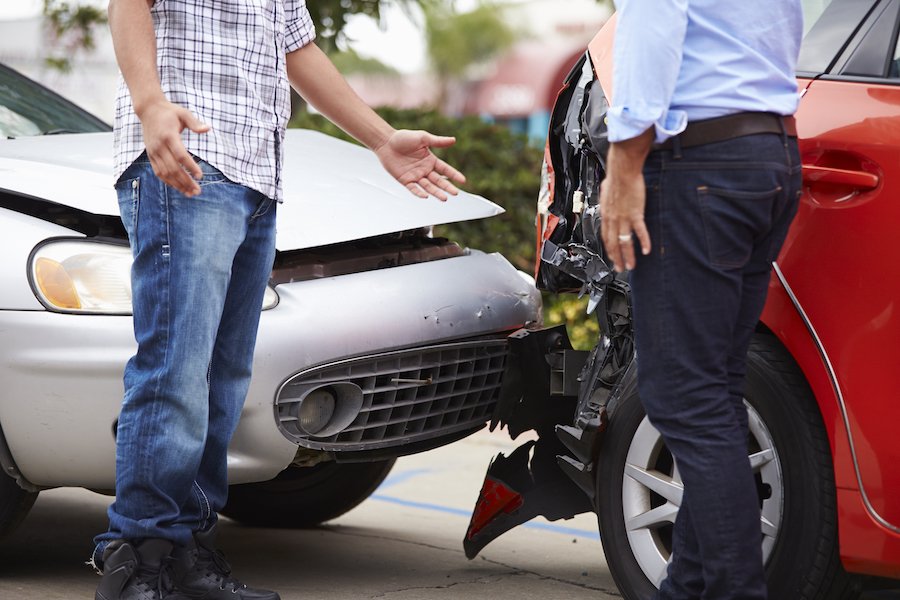Every day innocent victims are injured or killed in Nevada auto accidents. Our attorneys can help you to get justice and compensation.
Please note: Our firm only handles criminal and DUI cases, and only in California. We do not handle any of the following cases:
- civil matters
- CCWs or gun right restoration
- labor
- family law
- immigration
- landlord/tenant
- harassment
- restraining orders
And we do not handle any cases outside of California.
Call Us NowIs Nevada a “no-fault state” when it comes to car accidents?
Posted on

No, Nevada is not a no fault state. Instead, Nevada is a “fault state” for car accidents and personal injury cases in general.
This means your insurance company’s job is to determine who is responsible for the accident and therefore who is legally obligated to pay for the injuries and damages caused.
It is not unusual for accidents to have multiple at-fault parties. Even if you were partly to blame, you can still recover damages in Nevada as long as you were no more than 50% at fault.1
How is fault determined in Nevada?
With Nevada being a “fault state”, insurance companies consider all the available evidence when determining who is at fault in an accident. With car accidents specifically, insurance carriers consider the following:
- Statements by the drivers, passengers, and eyewitnesses;
- Police reports;
- Photographs of the property damage;
- Video surveillance footage:
- Smartphone footage by eyewitnesses;
- Accident reconstruction expert opinions (in rare cases);
- Weather reports;
- Road inspections; and/or
- Reports from the mechanics who last serviced the vehicles.
If you are in a car accident, you are strongly advised against speaking to an insurance adjuster yourself.
Adjusters know how to coax incriminating statements out of unsuspecting accident victims. What you unwittingly utter in the traumatic aftermath of an accident can come back to haunt you during settlement talks or in court.
Instead, you should rely on your Nevada personal injury attorneys to do all the talking.
When if I was partly at fault?
Nevada is a modified comparative negligence state (“shared fault“). This means that parties who are at least 50% responsible for an accident are liable to you, even if you share some of the blame – such as by not wearing a seat belt during a car crash.
If a car crash case goes to trial, defendants who are only partially at fault are required to pay less money than defendants who were 100% to blame. For example, a defendant that was apportioned 75% of the fault should pay only 75% of the total damages.2
Note that Nevada tort laws are different from states like California which follow a “pure comparative negligence” model, where any victim is eligible to recover damages even if they were mostly at fault.
How do I collect damages following a car accident in Nevada?
Following a car accident, you can either:
- file a claim with your own insurance company;
- file a claim with the at-fault party’s insurance company; or
- sue the at-fault party in a personal injury lawsuit.
It is highly recommended that you hire an at-fault state personal injury attorney to bring suit (or at least to engage in aggressive pre-litigation settlement talks in an effort to avoid a lawsuit). This typically results in the highest payout.
Experienced Nevada car accident attorneys know what to say – and what not to say – to maximize the odds of a large settlement. An insurance company’s sole focus is to pay out as little as possible, whether you are at fault or not. A personal injury attorney’s job is to hold these insurance companies to task to help ensure you are getting every cent available under the law.
Will my insurance rates go up if I caused a car accident?
If you are less than 50% at fault for your car accident, you should not see your insurance premiums increase. Though if you are found to be at least 50% at fault, you are susceptible to getting your premiums increased.3

In no fault states, car crash victims typically cannot sue the at-fault parties unless they sustain substantial, permanent injuries such as scarring or organ loss.
Is there a minimum threshold for suing after a car accident?
No. Since Nevada is an at-fault state, you can sue anyone responsible for harming you for any amount – even just $1. The extent of the damage is less important than the principle that everyone should be expected to pay for whatever damages they cause.
This is different from no fault states like Florida, where there usually is a minimum amount of damages that must be met before you can file a claim against another party’s insurer. The concept behind no-fault states is that it is more beneficial for society if individuals rely on their private insurance to handle minor claims with no serious injuries rather than engaging in adversarial legal disputes for every single case.
One benefit of no fault insurance states is that insurers stick to paying out claims rather than investigating who is at fault, which can be a time-consuming and frustrating process. Meanwhile, a benefit of being in an at-fault state like Nevada is that motorists arguably have a greater incentive to drive safely since they know they can be sued for even minor damage.
What are Nevada’s mandatory insurance minimums?
To have a vehicle in Nevada, you must carry bodily injury coverage with policy limits of no less than:
- $25,000 per accident for the injury or death of one person,
- $50,000 per accident injuring or killing two or more persons, and
- $20,000 per accident for property damage sustained by others.4
This is just the minimum. You are encouraged to carry as much insurance as you can afford, especially since car accidents can cause catastrophic medical injuries.
Is no fault insurance available in Nevada?
Yes. In Nevada, liability insurers offer an optional form of no-fault insurance called Medical Payments Coverage (Med Pay). It pays your medical bills regardless of who was at fault for the accident.
Specifically, Med Pay covers the reasonable and necessary medical and funeral expenses (up to the policy limits) of you, your family, and anyone in your vehicle at the time of the accident. Med Pay also covers situations when you or your family are pedestrians and are hit by a vehicle.
Although Med Pay is not required insurance, you are strongly advised to carry it to help fill the gaps of regular liability insurance. You are also advised to carry uninsured/under-insured motorist (UM/UIM) coverage: That way, your insurer is required to pay you in the event the person who crashed into you has no money.
What damages can I get following a car accident?
If you were a victim of an automobile crash, the at-fault driver’s insurance company should reimburse you for both your economic damages as well as non-economic damages.
Economic damages include injuries that are easy to calculate, such as:
- medical bills (present and future),
- lost wages,
- loss of future earnings, and
- property damage
Non-economic damages include injuries that are harder to put a price tag on, such as pain and suffering.
What should I do following a car accident in Nevada?
If possible, take these five steps after a vehicle collision:
- If you are in a car crash where someone is hurt, remain at the scene and exchange names and insurance information with the other involved drivers. Otherwise, you risk getting arrested for hit and run. Though if you are blocking traffic, move to a safe area if you can.
- Seek medical assistance for any victims and yourself by calling 911. Also contact the police so they can make a detailed report of what happened. The report should also include all the basic information, such as the date, address, time of day, and names of the involved parties.
- Preserve any evidence you can by taking photographs and video of the scene (especially of any car damage, tire/skid marks on the ground, and road problems such as potholes) and by gathering contact information of eyewitnesses. Or ask other people there to take pictures if you are unable to. Write down the vehicle information of the other cars involved (make/model/etc.), and record your impressions of what happened – including the weather and road conditions – since memories fade quickly.
- The most important thing is not to admit fault. You may think you violated a traffic rule by speeding or failing to signal, but you could be wrong. Also, do not say to anyone that you are unhurt. You may very well have injuries that manifest after the fact.
- Finally, contact a personal injury attorney and report the accident to the Nevada Department of Motor Vehicles if there was bodily injury or property damage totaling $750 or more.
See our related article, 10 critical steps to take after a Nevada car accident.

In Nevada, at-fault drivers are responsible for any accidents they cause, from minor fender benders to catastrophic car wrecks.
Is Nevada a no-fault divorce state?
Unlike with personal injury cases, Nevada is a no-fault divorce state. A no-fault divorce does not require you to accuse the other spouse of any wrongdoing in order to file for a divorce. You can simply state that you two no longer get along.
Before the implementation of no-fault divorce, one spouse was required to prove that the other spouse was at fault for the demise of the marriage. Now, no-fault divorces are granted in situations of:
- Incompatibility;
- Irreconcilable differences;
- Irretrievable breakdown of a marriage; or
- Showing that you and your spouse have been separated for a minimum of 12 months.
However, fault can still be considered when determining property divisions or awarding alimony.5
Legal References
About the Author

Neil Shouse
A former Los Angeles prosecutor, attorney Neil Shouse graduated with honors from UC Berkeley and Harvard Law School (and completed additional graduate studies at MIT). He has been featured on CNN, Good Morning America, Dr Phil, The Today Show and Court TV. Mr Shouse has been recognized by the National Trial Lawyers as one of the Top 100 Criminal and Top 100 Civil Attorneys.

